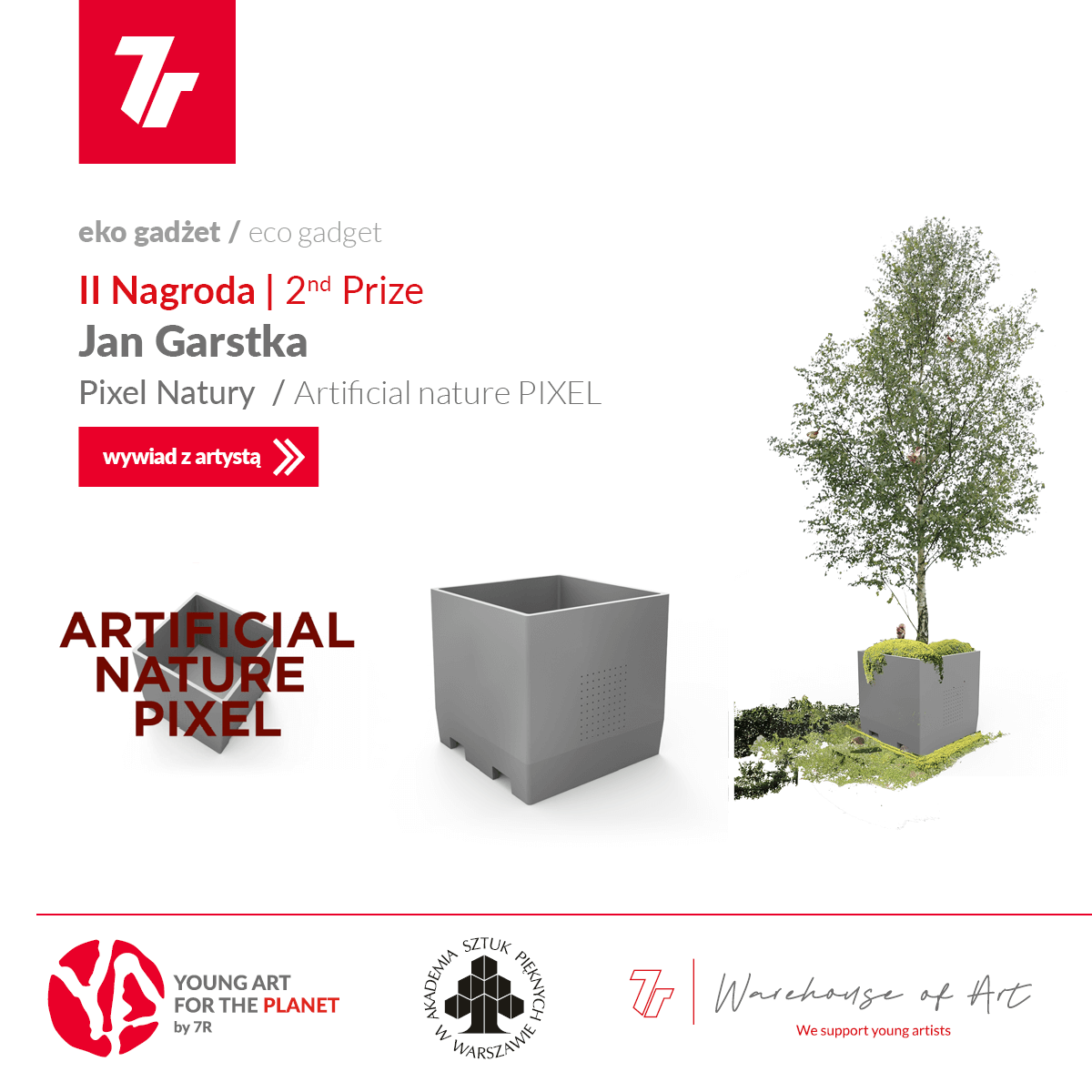Art can change reality

Jan Garstka – the second prize winner in the 7R Warehouse of art ‘Young art for the planet’ in the Eco Gadget section – tells us how artists improve the world that surrounds them and argues that that companies could implement many interesting projects that are socially responsible and environmentally-friendly without impacting their profitability.
What was the inspiration behind the creation of your Pixel of Nature project, which is a container that serves as a flowerpot and also as a micro-passage and home for small creatures, while being both easy and cheap to produce and also easy to transport?
Jan Garstka: Before I began studying at the Academy of Fine Arts, I studied biotechnology. Taking action to support nature is therefore something close to my heart. There, I was involved in environmental biology and I participated in studies on various types of animals. This has given me a broad knowledge of the presence of animals in man-made spaces. My project was directly inspired by studies conducted by Warsaw scientists in Skaryszewski park. It was going to be redeveloped but studies by a group of biologists demonstrated that rebuilding the infrastructure including the paths and alleyways would have reduced the biodiversity of the park. This would have then have had catastrophic results for the surrounding area with fewer nesting birds and everything that goes along with that such as an increase in the number of insects and a reduction in the number of small rodents such as field mice and squirrels.
As a result, I started to take an interest in habitats and animal crossings. On both a medium and large scale animal crossings between habitats already exist and they work great. They include animal crossings over motorways and little crossings for amphibians and other small animals. On a smaller scale, such crossings are lacking. My purpose was to create such elements and make them fit into the urban spaces. You will be able to move them and they will become a place for flora and give shelter to fauna. That’s how the Pixel of Nature came about. They are designed to be used by towns, companies and even ordinary people.
It seems that nature plays an important role in your creativity…
It is something I think about. Nature, unlike theoretical physics, is something we all experience and we all have some effect on it just as it has an effect on us. It is a graceful source of inspiration that can be used to improve how the space around us works.
The environment affects us and we affect the environment. How can artists influence people’s thinking when it comes to looking after nature?
I hope we can with such projects. An artist creates possibilities and in he principle forces things – since part of our work is to use force. I create designs and visual communications. I concentrate on designing objects that can be industrially produced and they influence people based on the current concept of development. As designers, we try to encourage firms to use more ecologically friendly production processes, not only from our own inner conviction, which of course we have, but also from a commercial and legal standpoint. We should anticipate this in our work.
As an artist I believe we must confront people, force them into an uncomfortable situation that causes them some trouble, but nonetheless encourages them to think through various issues. The reason artists are trained is to push this reality forward. I have no interest in creating art that I find comfortable.
Could you tell us what project you are working on at the moment?
I am working on industrial projects for clients as part of the TAKŁADNIE (www.takladnie.com) designers cooperative. They include biochemical education projects, but I can’t go into details. In the cooperative we always try and give back something constructive for the space that surrounds us. We’ve decided to stay in Poland and in Warsaw as designers to build up our country’s reality as responsible creators.
Governments, cities, companies and corporations can act to save the environment but a lot also depends on the average Joe Bloggs. How does this issue effect your normal everyday life?
I try to convince people to segregate their rubbish very carefully. I try to do this myself and I encourage other people to think about the effect they have on the environment. For example I try to encourage them to use the right cleaning products and the right form of transport. That they heat their apartments appropriately and make the right consumer choices.
What do you think about the 7R Warehouse of art ‘Young art for the planet’? competition
Such competitions give young artists a name and the chance to develop their designs. They can also encourage companies to invest in appropriate projects that at the same time are totally commercial. When we design something, we consider whether a particular solution might actually exist. There are many conditions to developing particular projects but such an implementation might occur. A lot of designs come up that are economically feasible and so why not use them when they make the world just a little bit better?
About Warehouse of Art
The 7R Warehouse of art ‘Young art for the planet’ competition was open to students and graduates of Warsaw’s Academy of Fine Arts. Its guiding motto was “Technology, Ecology, People, Coexistence”. The competition requirement was to create a project of utility art with an ecological theme in one of three categories: Ergonomic seating, murals on the side of a fire water tank and an ecological 7R gadget. In total, 26 entries were submitted. The awarded projects are available at 7rwarehouseofart.pl.





